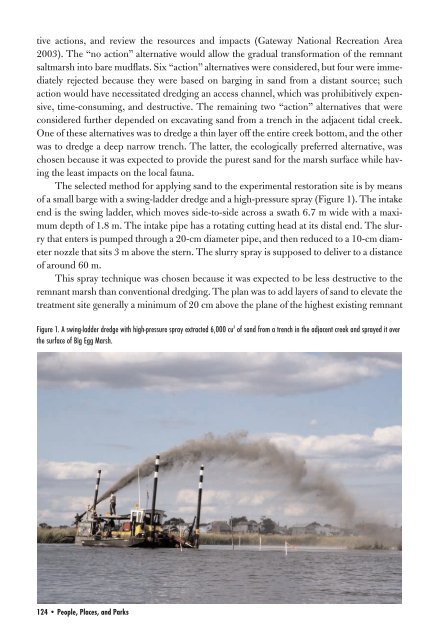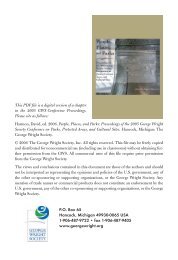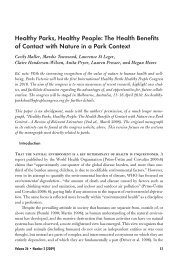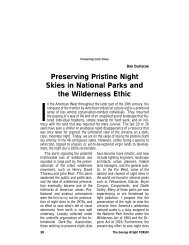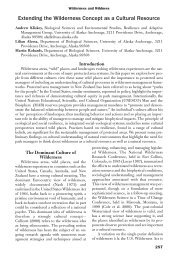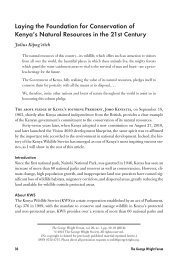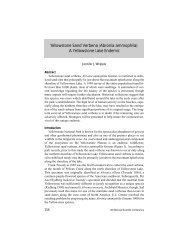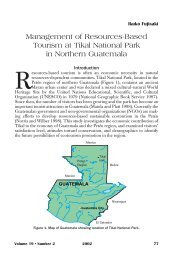Big Egg Marsh Experimental Restoration in Jamaica Bay
Big Egg Marsh Experimental Restoration in Jamaica Bay
Big Egg Marsh Experimental Restoration in Jamaica Bay
Create successful ePaper yourself
Turn your PDF publications into a flip-book with our unique Google optimized e-Paper software.
tive actions, and review the resources and impacts (Gateway National Recreation Area<br />
2003). The “no action” alternative would allow the gradual transformation of the remnant<br />
saltmarsh <strong>in</strong>to bare mudflats. Six “action” alternatives were considered, but four were immediately<br />
rejected because they were based on barg<strong>in</strong>g <strong>in</strong> sand from a distant source; such<br />
action would have necessitated dredg<strong>in</strong>g an access channel, which was prohibitively expensive,<br />
time-consum<strong>in</strong>g, and destructive. The rema<strong>in</strong><strong>in</strong>g two “action” alternatives that were<br />
considered further depended on excavat<strong>in</strong>g sand from a trench <strong>in</strong> the adjacent tidal creek.<br />
One of these alternatives was to dredge a th<strong>in</strong> layer off the entire creek bottom, and the other<br />
was to dredge a deep narrow trench. The latter, the ecologically preferred alternative, was<br />
chosen because it was expected to provide the purest sand for the marsh surface while hav<strong>in</strong>g<br />
the least impacts on the local fauna.<br />
The selected method for apply<strong>in</strong>g sand to the experimental restoration site is by means<br />
of a small barge with a sw<strong>in</strong>g-ladder dredge and a high-pressure spray (Figure 1). The <strong>in</strong>take<br />
end is the sw<strong>in</strong>g ladder, which moves side-to-side across a swath 6.7 m wide with a maximum<br />
depth of 1.8 m. The <strong>in</strong>take pipe has a rotat<strong>in</strong>g cutt<strong>in</strong>g head at its distal end. The slurry<br />
that enters is pumped through a 20-cm diameter pipe, and then reduced to a 10-cm diameter<br />
nozzle that sits 3 m above the stern. The slurry spray is supposed to deliver to a distance<br />
of around 60 m.<br />
This spray technique was chosen because it was expected to be less destructive to the<br />
remnant marsh than conventional dredg<strong>in</strong>g. The plan was to add layers of sand to elevate the<br />
treatment site generally a m<strong>in</strong>imum of 20 cm above the plane of the highest exist<strong>in</strong>g remnant<br />
Figure 1. A sw<strong>in</strong>g-ladder dredge with high-pressure spray extracted 6,000 cu 3 of sand from a trench <strong>in</strong> the adjacent creek and sprayed it over<br />
the surface of <strong>Big</strong> <strong>Egg</strong> <strong>Marsh</strong>.<br />
124 • People, Places, and Parks


